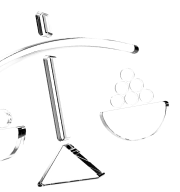Course overview
1. Why is risk management important to traders?2. How much should you risk on a trade?3. Applying a stop-loss, take-profit, and trailing stop4. Finding the right broker5. Conclusion3. Applying a stop-loss, take-profit, and trailing stop
Stop-loss and take-profit levels are determined based on technical analysis, risk tolerance, and trading strategy parameters. By establishing these levels in advance, traders make objective decisions about when to enter and exit trades, rather than relying on subjective judgments in the heat of the moment.
A stop-loss is a pre-determined price level at which you decide to sell an asset if its price drops to that point. It serves to limit potential losses and can be set when opening a trade.
A take-profit enables traders to exit a trade as soon as their profit target has been reached, without risking a future possible downturn.
A trailing stop is an order type automatically adjusted at a set percentage below (for long positions) or above (for short positions) the current market price. It essentially 'trails' the price as it moves. The purpose of a trailing stop is to allow a trader to continue to profit while a price is moving in the desired direction, but which automatically closes if the price moves in the opposite direction by a set amount.
Stop-loss orders
Stop-loss orders are not foolproof, especially in volatile markets where prices can gap up or down quickly, potentially executing your order at a slightly worse price than your stop price.
Example of applying risk management to a trade
- Determine how much you are willing to risk on your trade. This is commonly expressed as a percentage of your total capital.
Example: You identified a trade opportunity in EUR/USD and want to go long (buy). EUR/USD is trading at 1.10. You are aiming for 1.11 as the take profit level - a gain of 100 pips - with a stop loss order at 1.0950, thus risking 50 pips.
- How does this translate into dollars?
The Axi calculator can help you with this.
Your balance = $1,000
Maximum risk per trade = 2%
Maximum risk = 20 USD
Stop loss = 50 pips
Based on those inputs, the appropriate trade size would be 4,000 units, or 0.04 lots.
- Place an order of type ‘stop-loss’. The key difference from standard market or limit orders is that will have to enter the price at which you want the stop-loss to trigger and liquidate your position (sell your stake).
- Once the price reaches that level, the order
automatically closes your position, limiting
your losses and preserving your capital.



